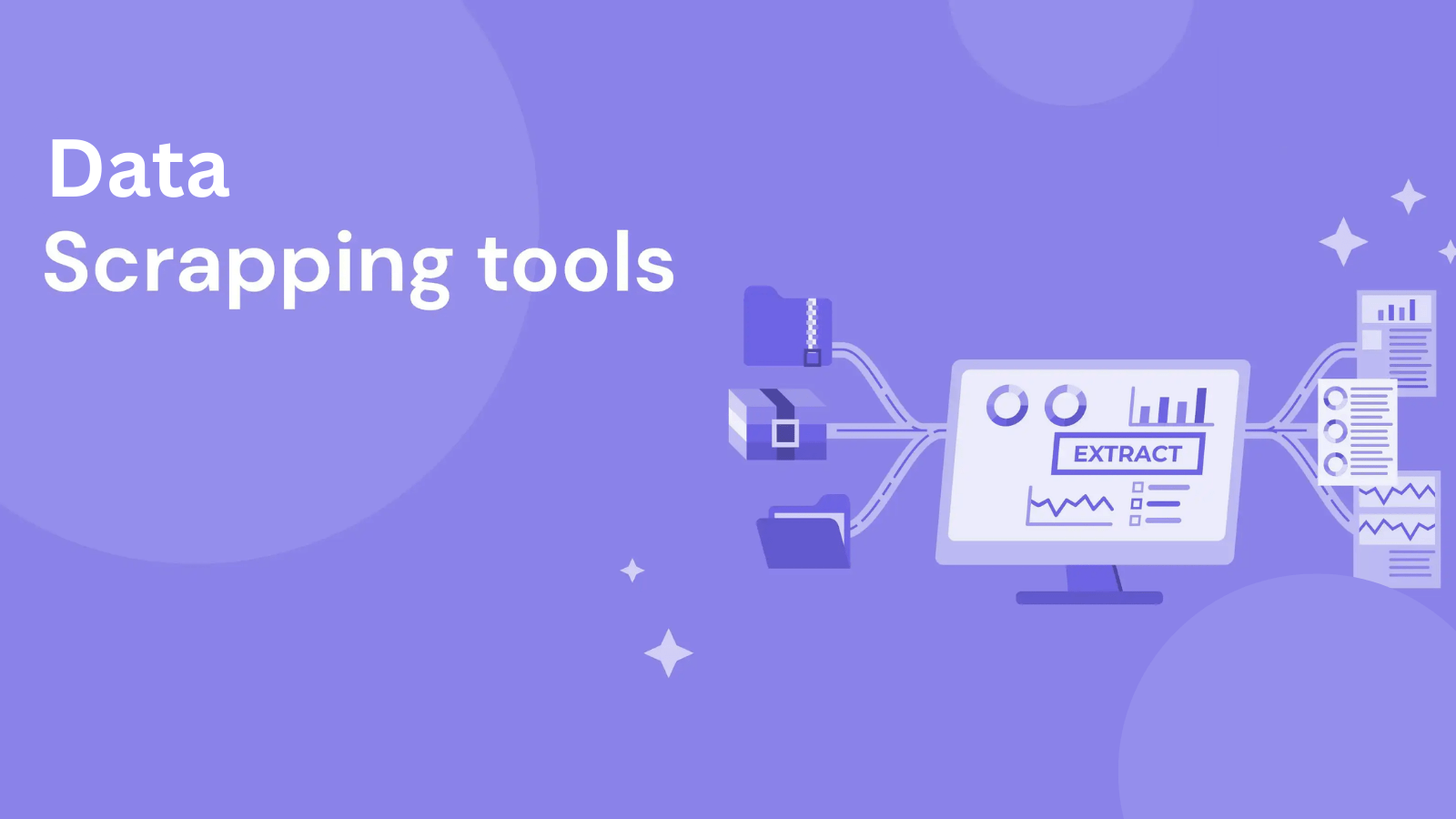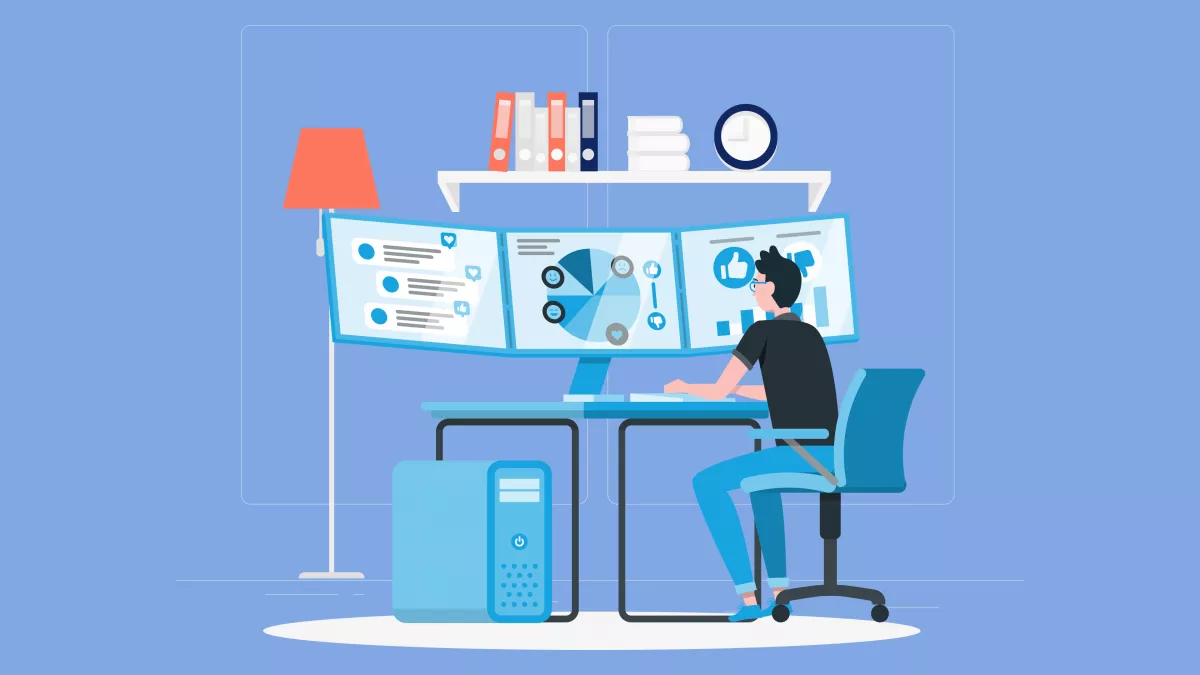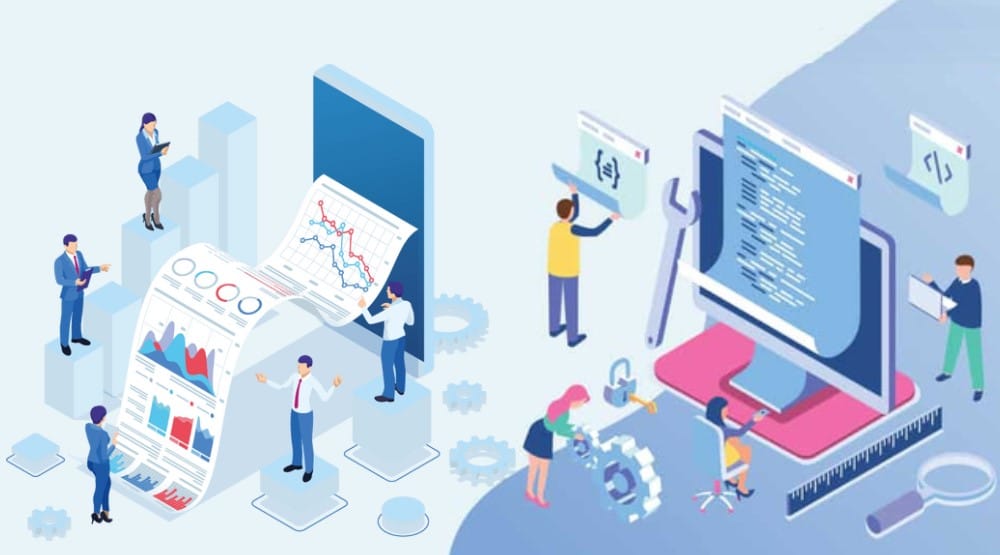Introduction to Data Scraping: Data Miner’s Guide

Welcome to the captivating journey of an introduction to data scraping. Imagine data scraping as a digital excavation, where we unearth gems of information from websites, APIs, and other online sources. This process empowers us to tap into valuable data, driving informed decisions and catalyzing innovation across various industries.
In today’s data-driven age, automation is the key to staying competitive. Data scraping opens the door to automating data collection and analysis, enabling efficient decision-making.
By simulating human browsing behavior, we extract desired data by sending requests to URLs, then utilizing CSS selectors to pinpoint specific elements containing the information we seek.
Prepare for a thrilling adventure as we explore data scraping in this tutorial. From foundational techniques to practical tools and real-world applications, this introduction to data scraping sets the stage for your exploration of the digital landscape.
Exploring The World Of Data Scraping
Let’s embark on our exploration of introduction to data scraping. As we navigate the digital world, we’ll uncover valuable information from different sources.
Understanding Data Sources
Think of the internet as a sprawling metropolis, each website a unique building brimming with information. But how do you navigate this bustling cityscape for data?
Just as a skilled traveler navigates a new city, data scraping allows us to explore websites, APIs, and databases, extracting valuable insights from their depths.
Whether it’s news articles, real-time stock prices, social media trends, or other data treasures, data scraping acts as your guide to navigate this digital landscape with precision and purpose.
What is Data Scraping?
Data scraping, also known as web scraping, is the art of automating the extraction of data from various online sources. Imagine it as a digital archaeologist carefully excavating precious artifacts from the vast expanse of the internet.
These artifacts could be anything from product prices on e-commerce websites to real-time stock market data, news articles, or even social media trends.
Why Does Data Scraping Matters?
In today’s data-driven era, information is power. Businesses, researchers, and individuals rely on data to make informed decisions, develop strategies, and gain a competitive edge.
Data scraping plays a pivotal role in gathering this data efficiently and comprehensively. Without it, the process of manually collecting and organizing data from multiple sources would be painstakingly slow and error prone.
Types of Data Scraping Techniques: Unleashing the Power of Technology
Ever wondered how websites serve up information? Prepare to unravel the captivating mysteries of web scraping, where HTML and CSS hold the keys to a treasure trove of data.
But that’s not all – let’s dive into the world of API scraping, where we ask digital gatekeepers for data, and screen scraping, where we interact with applications like a digital detective. These techniques are the magic wands of data miners, each with its unique incantations.
1. Web Scraping
Here, we delve into the heart of web scraping – a technique that unveils the essence of websites by dissecting HTML and CSS code.
In this method, we mimic human browsing behavior to access the desired data. By sending requests to URLs, we receive HTML files, which act as our virtual excavation site.
Then, employing CSS selectors, we pinpoint the specific elements holding the coveted information. It’s like having the ability to selectively pluck ripe fruits from a digital orchard.
2. API Scraping
APIs (Application Programming Interfaces) are the digital bridges that connect us with vast repositories of data. API scraping involves sending requests to these interfaces and obtaining structured data in return.
Think of it as knocking on the door of a data vault and receiving neatly arranged files in response. APIs facilitate a more controlled and organized data retrieval process, offering a structured format that’s ready for analysis.
It’s like having a direct conversation with a knowledgeable librarian who presents you with precisely cataloged books upon request.
3. Screen Scraping
Imagine an investigative journey where we interact with applications as if they were responsive collaborators. Screen scraping is the art of extracting data from user interfaces, essentially mimicking human interaction with software.
By emulating user actions, such as clicking buttons and filling forms, we navigate through applications to retrieve valuable information. It’s like having a digital detective skillfully gather clues from various corners of a virtual crime scene.
Screen scraping grants us access to data locked within applications, broadening our horizons beyond the confines of the web.
Tools and Libraries for Introduction to Data Scraping
Get ready to play the role of a tech magician as we introduce the tools and libraries that empower your data scraping adventures:
· Python: Our Programming Guide
Python, a versatile programming language, is your go-to companion. With its easy-to-understand code and powerful features, Python is like your trusted guide in the world of data scraping.
· Beautiful Soup and Scrapy: Our Website Wizards
Imagine Beautiful Soup and Scrapy as magical potions. Beautiful Soup helps you understand the structure of websites and gather information from them.
On the other hand, Scrapy is like a magic spell that creates web crawlers, helping you navigate websites and collect data effortlessly.
· Requests and Axios: Our API Messengers
When you want to gather data from online sources, Requests in Python and Axios in JavaScript act as your messengers. They help you communicate with websites and servers to fetch the data you need.
· Selenium and Puppeteer: Our Automation Helpers
If you want to automate tasks on websites, think of Selenium and Puppeteer as your helpful assistants. They mimic human actions on websites, making it possible to gather data from interactive pages and perform tasks without manual effort.
Crafting the Ultimate Solution By Combining Tools
Think of these tools like different pieces of a puzzle. When you combine Python, Beautiful Soup, Scrapy, Requests, Axios, Selenium, and Puppeteer, you create a powerful solution that can solve various data scraping challenges.
Whether you’re new to coding or have some experience, these tools will be your companions in your quest to uncover valuable data online.
Web Scraping in Action: Practical Use Cases
Let’s look at several web scraping applications to learn why must someone get such massive amounts of data from websites:
1. Price Comparison
Ethical web scraping allows businesses and consumers to compare prices across different websites, empowering them to make informed purchasing decisions and find the best deals.
2. Market Research
Web scraping enables ethical data collection for market research, helping businesses analyze trends, customer preferences, and competitor strategies to refine their products and services.
3. Academic Research
Researchers can use web scraping responsibly to gather data for academic studies, enabling insights into various fields like social sciences, economics, and public health.
4. Job Market Analysis
Web scraping job listings ethically supports labor market analysis, offering valuable information to job seekers, employers, and policymakers.
5. Social Media Analytics
Ethical web scraping of social media data allows businesses and researchers to analyze trends and sentiments for marketing and public opinion studies.
Ethical and Legal Considerations For Data Scraping
Hold on – before you embark on your data journey, let’s talk ethics. Just as adventurers follow a code, data miners must respect guidelines and laws. Is web scraping legal? When does it cross the ethical line?
While web scraping itself is not illegal, its usage must comply with the website’s terms of service(ToS) and relevant laws.
Key Takeaways
- Always check a website’s “robots.txt” file to see if it allows scraping.
- Additionally, avoid overwhelming a website’s server with too many requests, as this could be considered unethical and may result in IP bans.
Data Scraping Workflow: A Step-by-Step Guide
Eager to dive into data scraping? Here’s your roadmap: Define goals, pick data source, analyze URLs, gather, and refine data, then store your prized findings. Each step guides you toward data success.
It begins with mining URLs, which are the addresses of specific webpages, to initiate the data extraction process. Here’s a technical overview of how web scraping works:
1. URL Mining
The first step is to identify the target website and gather the URLs of the webpages containing the desired data. URLs serve as gateways to access the information stored on those webpages.
2. HTTP Request
Once we have the URLs, web scraping involves sending HTTP requests to the web server hosting the website. This request is made from the web scraper, acting as a web client, to fetch the content of the webpage.
3. HTML Parsing
The server responds with the webpage’s HTML code, containing the data we seek. Using web scraping libraries like Beautiful Soup or Scrapy, the HTML code is parsed into a structured tree-like format, known as the Document Object Model (DOM).
4. Element Identification
The DOM allows us to navigate through the webpage’s structure and locate specific HTML elements (such as headings, tables, or paragraphs) that contain the data we want to extract.
5. Data Extraction
Once we’ve identified the target elements, we extract the relevant data from the HTML tags. This data can be in the form of text, images, or even links to other webpages.
6. Data Processing
The extracted data may require further processing, such as cleaning and formatting, to make it suitable for analysis and storage.
7. Storage or Analysis
Finally, the scraped data can be stored in a preferred format, like a CSV file or a database, for future use. Alternatively, it can be directly used for data analysis, research, or other applications.
Challenges and Limitations of Data Scraping
Every adventure has its dragons, and data scraping is no different. But don’t worry, brave data explorers – there are ways to conquer these challenges and reach your goals.
Some websites don’t stay the same termed as “Dynamic Websites”; they change when you visit them. This can make scraping tricky because the usual methods might not work. But with special tools and tricks, you can navigate these changing websites and get the data you need.
Sometimes, you’ll encounter CAPTCHAs, those puzzles that ask if you’re human. They can block your scraping efforts. However, you can use services or smart algorithms to solve these puzzles and get access to the data.
Sometimes, websites might block you if you’re scraping too much or too fast. But don’t worry, you can use methods like changing your identity (IP address) to keep scraping without any problems.
Navigating the Downside: Pitfalls in Introduction to Data Scraping
While data scraping is a powerful technique, it comes with its fair share of challenges. As we dive into the technical realm, let’s explore the downsides that data scraping can present.
1. Website Structure Variability
One major challenge is the dynamic nature of websites. Websites often change their structure, making it difficult for scraping scripts to consistently extract data. This requires constant adjustments to the scraping code to accommodate these changes.
2. CAPTCHAs and Bot Detection
Many websites employ CAPTCHAs and bot detection mechanisms to prevent automated scraping. CAPTCHAs are puzzles that humans can solve but can be tricky for scraping bots.
Overcoming this challenge requires implementing CAPTCHA-solving techniques or employing machine learning algorithms to tackle these puzzles.
3. Data Privacy and Legal Concerns
Respecting data privacy and adhering to legal guidelines is crucial in data scraping. Scraping personal or sensitive information without consent can lead to legal troubles.
Ensuring ethical scraping practices and adhering to websites’ terms of use are imperative.
4. Technical Complexity
Data scraping involves coding and technical skills. Beginners may find it challenging to grasp the intricacies of web technologies, libraries, and scripting languages required for effective scraping.
While the challenges of data scraping are real, they are not insurmountable. Adopting advanced scraping strategies, staying informed about legal and ethical considerations, and constantly refining scraping techniques can help navigate these challenges.
Best Practices for Effective Data Scraping
As we delve into the art of effective data scraping in this introduction to data scraping, consider the analogy of a skilled craftsman who meticulously plans before creating a masterpiece.
Just as a well-thought-out strategy guides a craftsman in a vast landscape, your strategy becomes your compass in the intricate realm of web data.
· The Polite Crawler Approach
The “Polite Crawler” approach is about being considerate to websites. Limit the number of requests you send in a short span, allowing servers to breathe. This not only prevents overwhelming servers but also demonstrates responsible scraping behavior.
· Error Handling
Error handling is your guiding light, helping you navigate these unforeseen traps. In scraping, errors are common – from connectivity issues to unexpected website changes.
Implement robust error handling mechanisms to gracefully handle these situations. It safeguards your scraping process from abrupt interruptions.
Data Scraping Case Studies: Real-World Insights
Let’s now delve into real-world scenarios through case studies, effectively bridging theory, and practice in this introduction to data scraping.
Picture this: we’re extracting e-commerce prices for market analysis – a journey through APIs and web scraping. Or we’re crunching social media sentiment data, transforming raw text into insights. These case studies are your treasure maps, guiding you through the complexities of real-world data.
1. E-commerce Price Tracking for Market Analysis
Imagine you’re an e-commerce enthusiast eager to gain a competitive edge in the market.
With web scraping, we can automate the process of collecting prices for specific products across multiple platforms. Additionally, we can dive into utilizing APIs to obtain real-time pricing data from online marketplaces.
This case study not only highlights the technical strength of data scraping but also illustrates its strategic significance in acquiring insights for dynamic market analysis.
2. Unveiling Social Media Sentiments for Brand Perception
In the realm of social media, understanding sentiment is key to shaping brand perception. Our second case study focuses on scraping social media platforms for user-generated content and analyzing sentiments hidden within raw text.
By utilizing Natural Language Processing (NLP) techniques, we’ll uncover sentiments – positive, negative, or neutral – associated with specific brands or topics.
This case study goes beyond data extraction; it showcases the fusion of data scraping and advanced analytics.
The Future Of Data Scraping
What lies on the horizon for data scraping? In an era where data fuels innovation, the future of data scraping is poised to witness remarkable advancements and transformative trends.
AI-driven algorithms can autonomously identify and adapt to changes in website structures, ensuring consistent and reliable data extraction.
ML models can learn from scraped data patterns, leading to improved accuracy and the ability to handle complex data formats.
The advent of quantum computing introduces the potential to tackle intricate data scraping tasks. Quantum algorithms can efficiently process large datasets and perform complex queries, enhancing the scalability and speed of data scraping processes.
Continuous data extraction through real-time streaming ensures up-to-the-minute information retrieval. This advancement finds applications in financial markets, social media analysis, and IoT-driven environments, where immediate data availability is critical.
The convergence of data scraping and NLP opens doors to sophisticated content extraction. Advanced NLP models can accurately identify and extract relevant information from textual content, facilitating insightful analysis and decision-making.
Wrap Up
As we conclude our introduction to data scraping, I hope you’re as thrilled as I am about the limitless possibilities that await. We’ve delved deep into the intricacies of web scraping, from understanding its foundations to wielding powerful tools that transform raw data into valuable insights.
In today’s data-driven age, data scraping automates data collection and analysis for competitive edge. By mimicking human browsing, we extract data via requests and CSS selectors.
Data scraping acts as a digital guide, revealing insights from websites, APIs, and databases. Techniques like web scraping, API scraping, and screen scraping unlock technology’s power for data miners.
Tools like Python, Beautiful Soup, Scrapy, Requests, Axios, Selenium, and Puppeteer accompany you. Ethics, legality, and a defined workflow are crucial. Challenges include dynamic websites, CAPTCHAs, and data privacy, surmountable with advanced strategies.
As the future unfolds, AI, machine learning, quantum computing, real-time streaming, and NLP hold transformative potential, making data scraping more sophisticated and insightful. The journey continues as data scraping evolves with technology.
Explore novel prospects and acquire expert perspectives on smoothly incorporating technology into your business strategy at https://scrapewithbots.com.




